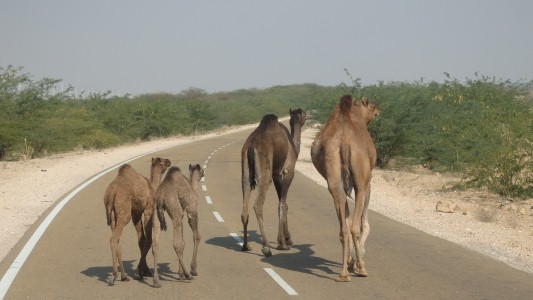
Camels have no road sense. Cows are slow and almost predictable. Goats run across the road snatching bits as they pass. Sheep are just unpredictable and need herders.
Motorcyclists slow down when they know someone is behind them and there isn't room to pass, cars can pass, but we have to slow also. So they slow some more.
Trucks have a speed limit of 40 km/hr and are generally well behaved.
Private cars driven by owner are cautious. Or carefree.
Buses have a speed limit of 65 km/hr but are driven by maniacs, have little power for acceleration so they like to keep them moving, and missing power steering so only drive in straight lines (until the last minute if playing chicken). They can stop anywhere.
Private Jeeps driven by professional drivers, and public transport jeeps are a mixture.
Tractor drivers are like truck drivers, but slower, with the addition of a wave as we finally glide past.
And its all a bit different by region, and town, and road, and etc.
And then there's us! Who behave absolutely impeccably, perfectly and predictably at all times.
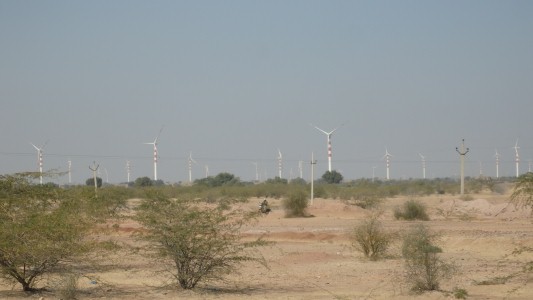
Measured in hours rather than numbers or km.
A vast swathe across the desert.
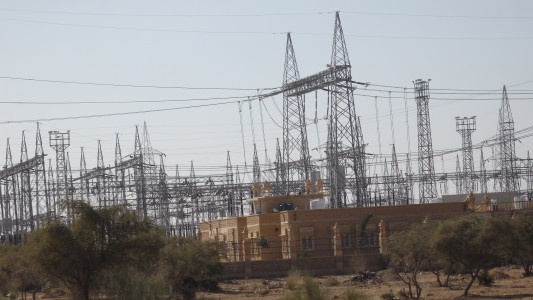
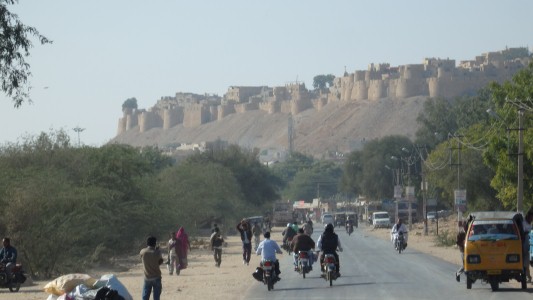
Golden city in the desert.
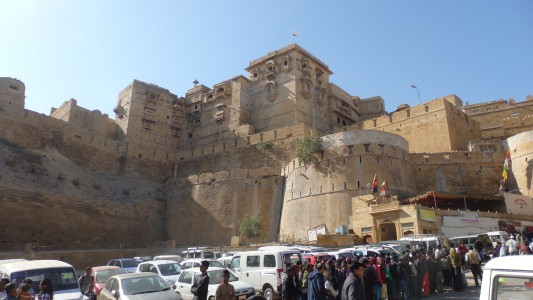
Not sure about the British, they were here but perhaps conquer is the wrong term.
The city is fairly and squarely on the old trade routes from India to Asia.
Not quite as famous as the Silk Route. But surely connected.
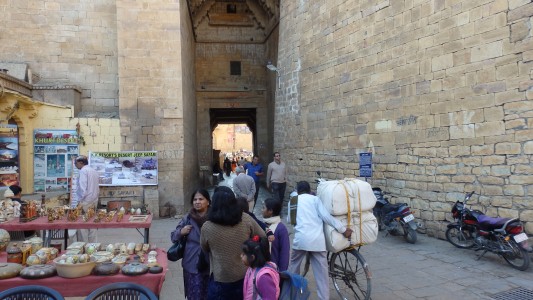
Built of local sandstone.
I helped push the loaded bicycle up the hill.
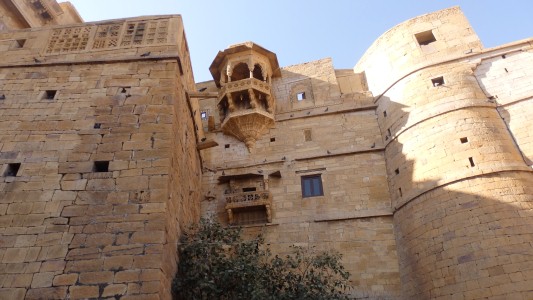
The fort Palace.
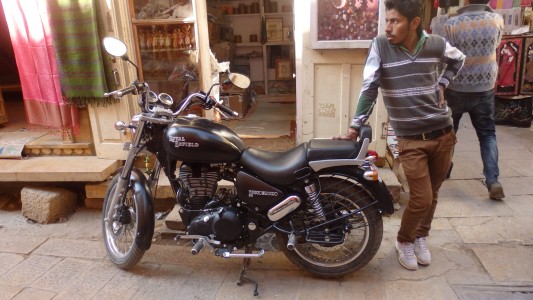
Made in India, the factory was sold to India by the British.
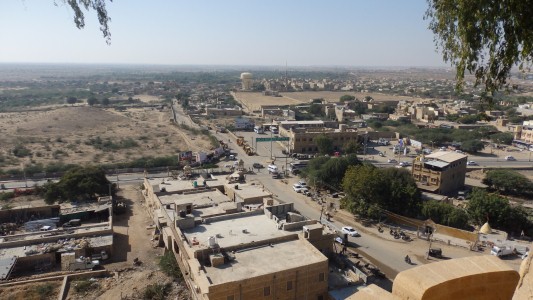
A hint of what life may have been like a thousand years ago.
The walls are a little inaccessible to us, there are building up against them.
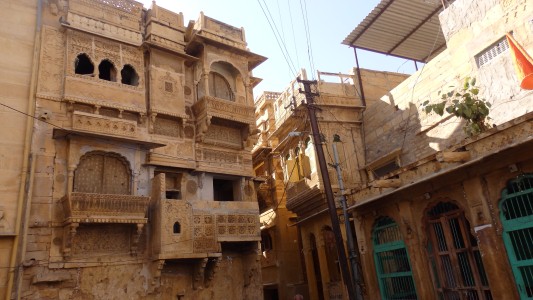
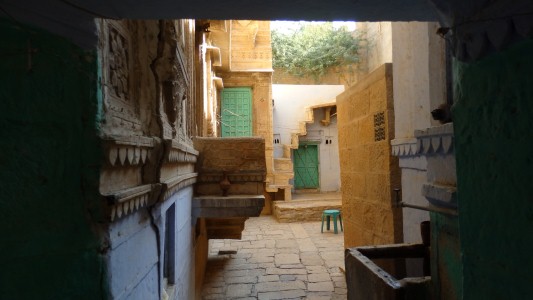
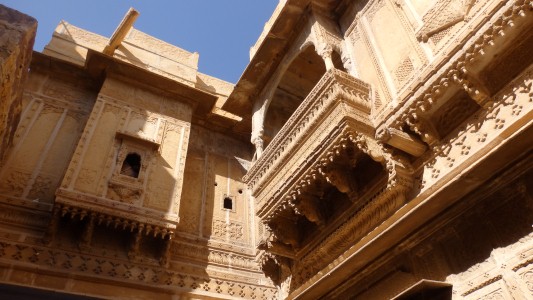
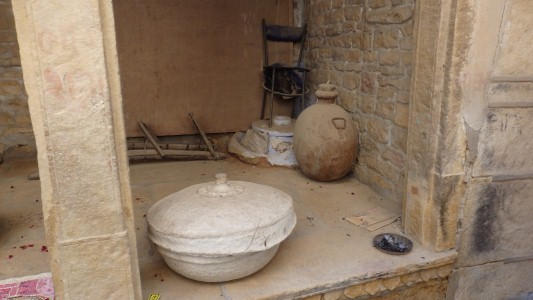
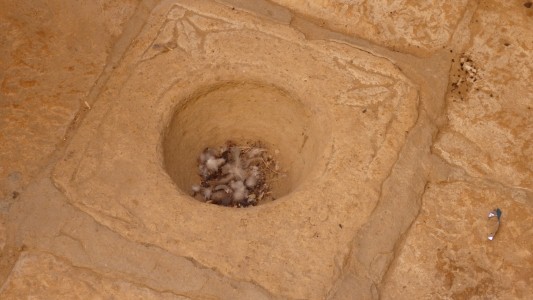
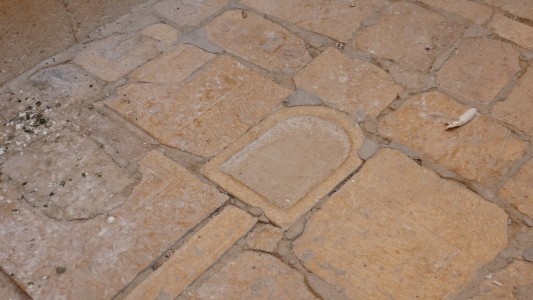
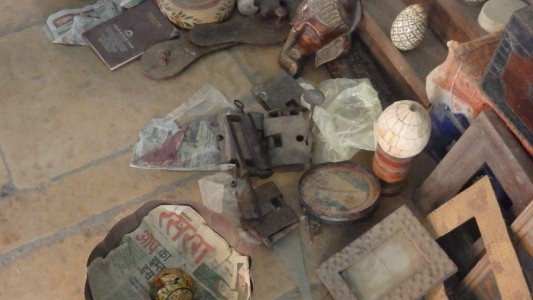
The book at top left of photo is a diary.
Complete with email address of publisher printed on the front.
We've noticed in many tourist traps in many countries there's a part of the souvenir industry devoted to making things look old.
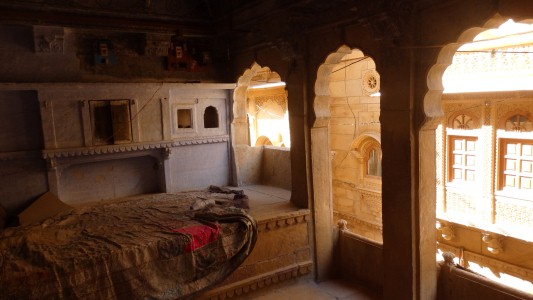
A waiting room.
Higher castes get to sit on the platform.
Lower castes on the floor.
About here we learned that 'muslimen' are not allowed into Jaisalmer as they eat meat.
Small cultural snippets that we may slowly piece together and try to fit our observations to..
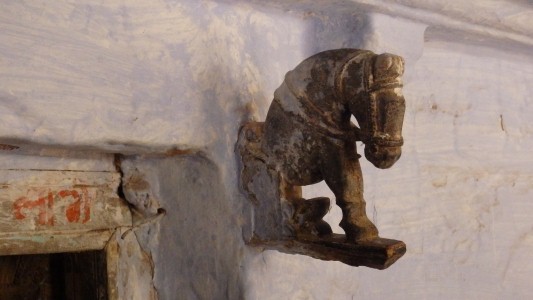
Symbols of power at the entrance to the audience room.
And this is just to talk to the secretary to gain access to the Maharajah.
Jaisalmer was founded about 1156 by the Bhati Rajput clan. They ruled until Indian independence from Britain in 1947.
A long time.
Until 16th century when trade really worked for them they apparently funded their lifestyle through looting and plundering.
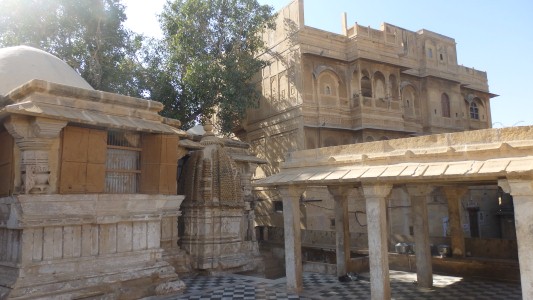
Happened upon the Laxmi Narayan Hindu temple.
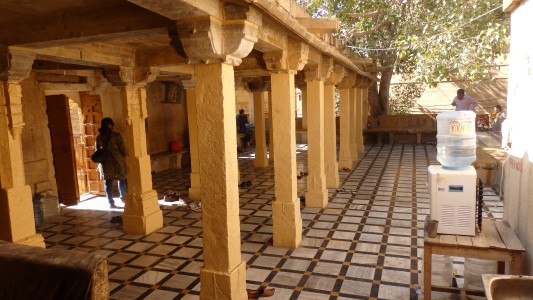
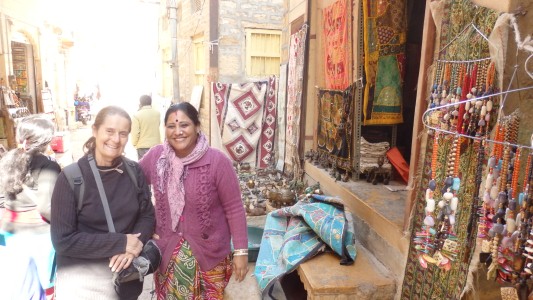
Tell us about the plight of women in Hindu culture. Then show us the wares produced by the women's cooperative.
We are not good buyers of souvenirs.
'Authentic' seems to elude us on so many occasions. We probably wouldn't recognise it if we saw it.
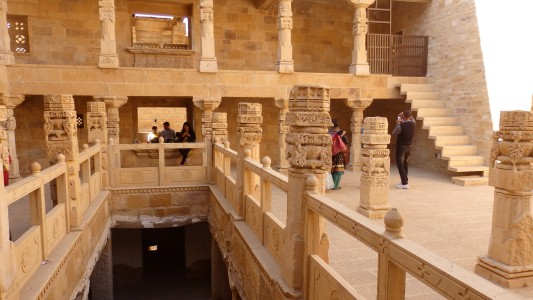
Inside this time.
Totally misjudged the helpful soul at the audio guide counter who stepped across the square to get our tickets for us.
Too suspicious, and too late, I saw the sign for 'how much'. A good outcome though, he scored us an age discount.
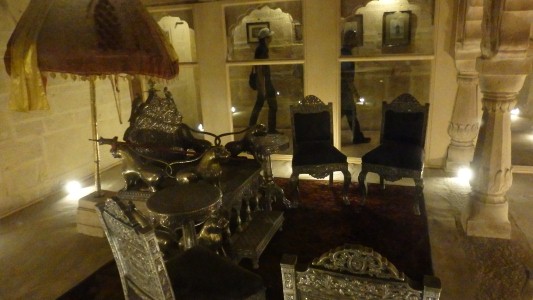
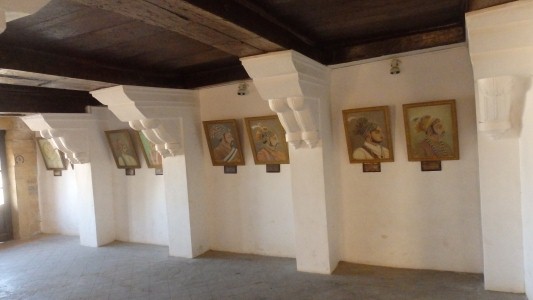
The one at far left is about 1152 AD.
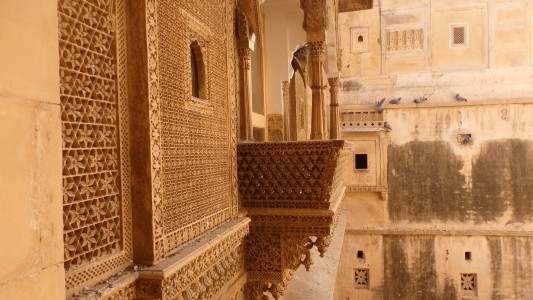
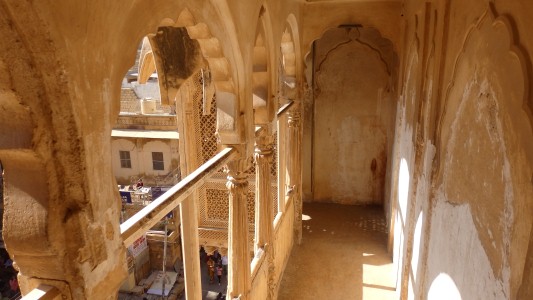
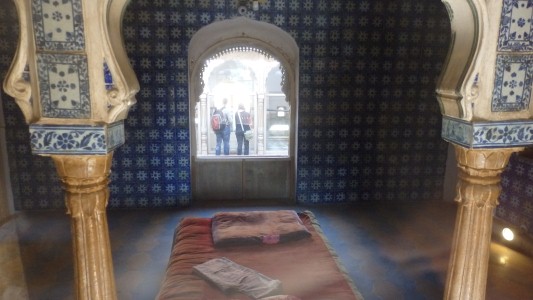
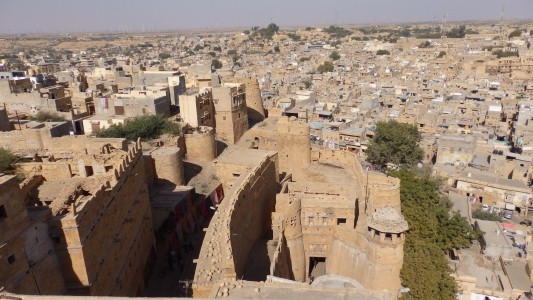
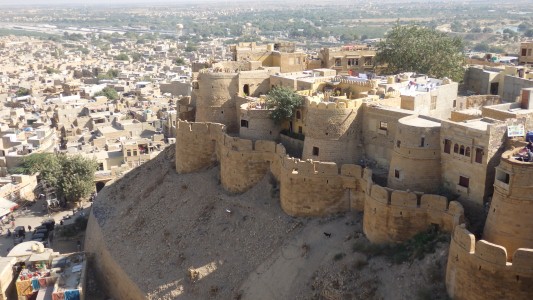
Rooftop restaurants for the (predominantly Indian) tourists.
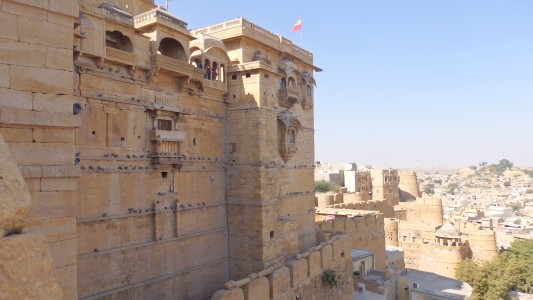
The importance of the route through what became Pakistan declined in a fervour of nation building and conflict.
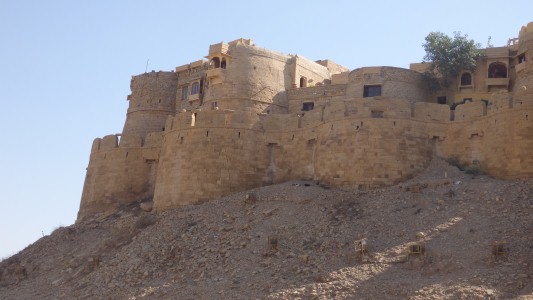
Alive and maintained, not rebuilt.
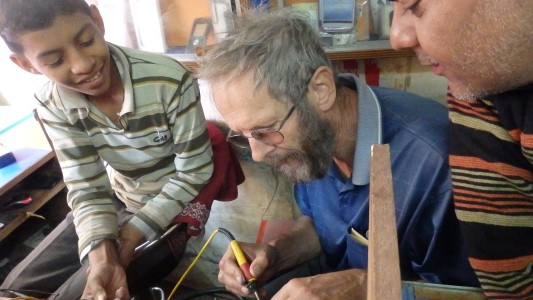
The Pokhara solderless twisted wire fix finally simply broke.
We went looking for a 'tv repair wallah'. Asked at a jewellers (face in foreground), and about soldering, and were shown a mobile phone repair shop.
Only the young lad available so instead of digging out his uncle I asked if I could use the soldering iron.
Cooker working again.
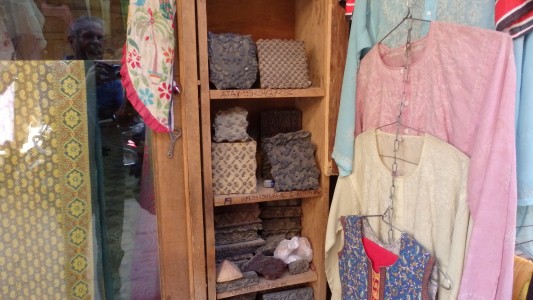
The wooden blocks are used for printing successive colours.
Fabrics are all the way from cheap printed chemical dyes to very expensive printed natural dyes.
We don't know enough about fabrics and dyes to be confident about the difference.
Starting prices for what looked like the same product vary enormously. Highest was the guy that showed us the book on local fabrics from London's Victoria and Albert Museum and didn't give us a chance to study it.
For some reason we liked the guy that started by explaining his shop wasn't for tourists and had prices starting at less than half the souvenir stalls. Low enough to be not worth haggling.
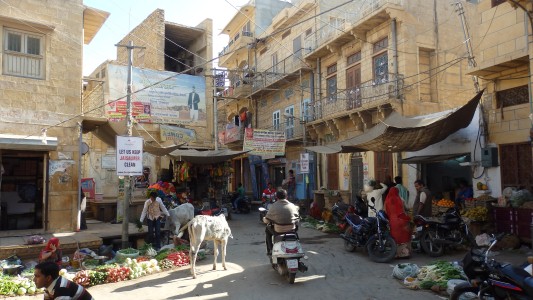
The gates to the fort are called 'pol's.
The gates off these streets are called 'havelis'.
Sometimes they lead to courtyards and houses.
Around this time it occurred to us that our window shopping was an interesting name for a style of shop that has no windows.
The sign says "Let's keep Jaisalmer Clean". It may not look like it in the photo but its an order of magnitude cleaner than Varannasi.
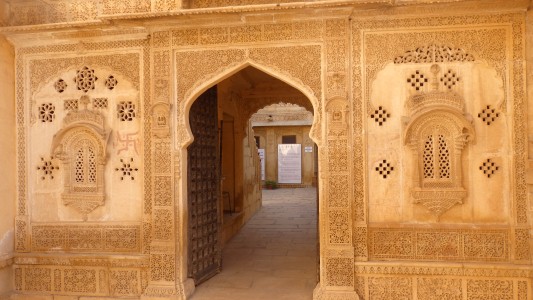
Below the fort.
Built a couple of hundred years ago as the Maharajah's new palace.
Now a hotel with a small museum.
And rooms for the current Maharajah.
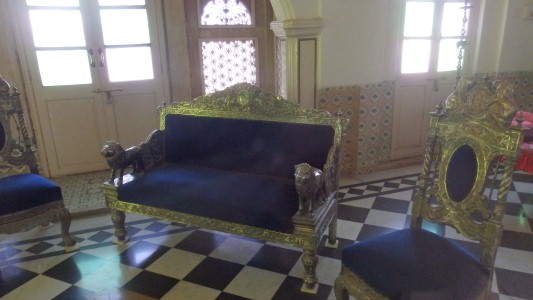
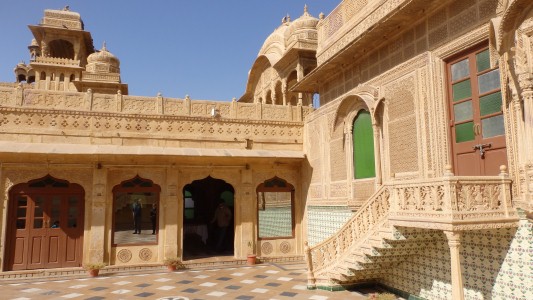
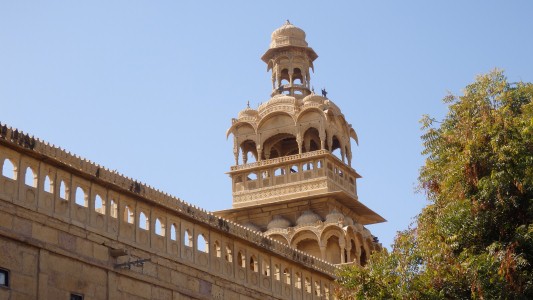
Not part of the tour.
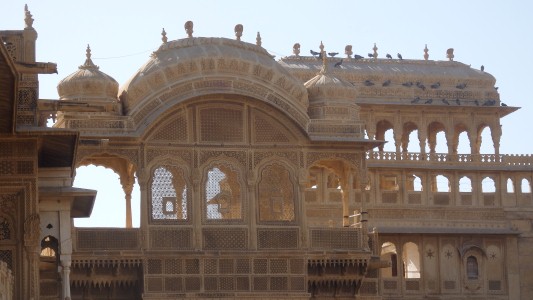
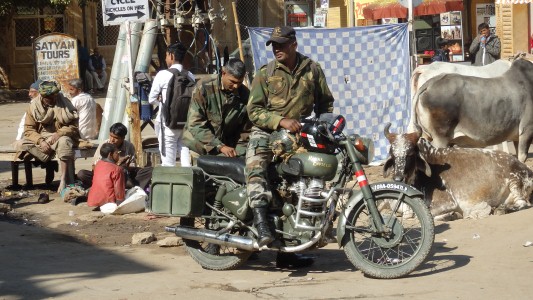
A bigger, slower revving engine than the Japanese inspired small engines. Solid.
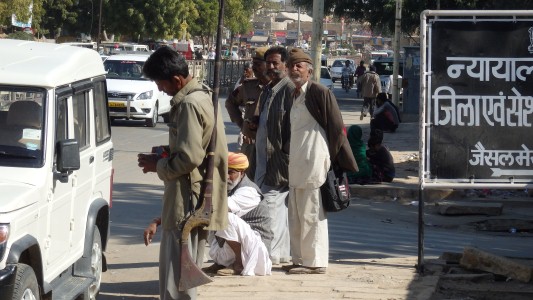
Much further west, and further north, is the northwest frontier.
This fine looking weapon reminded me of those tribal areas.
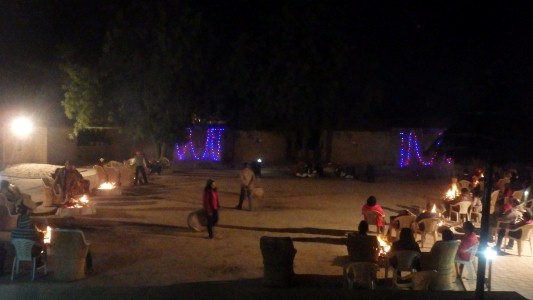
New Year's Eve concert of local music and dancing.
This is the view from the rear window of our truck.